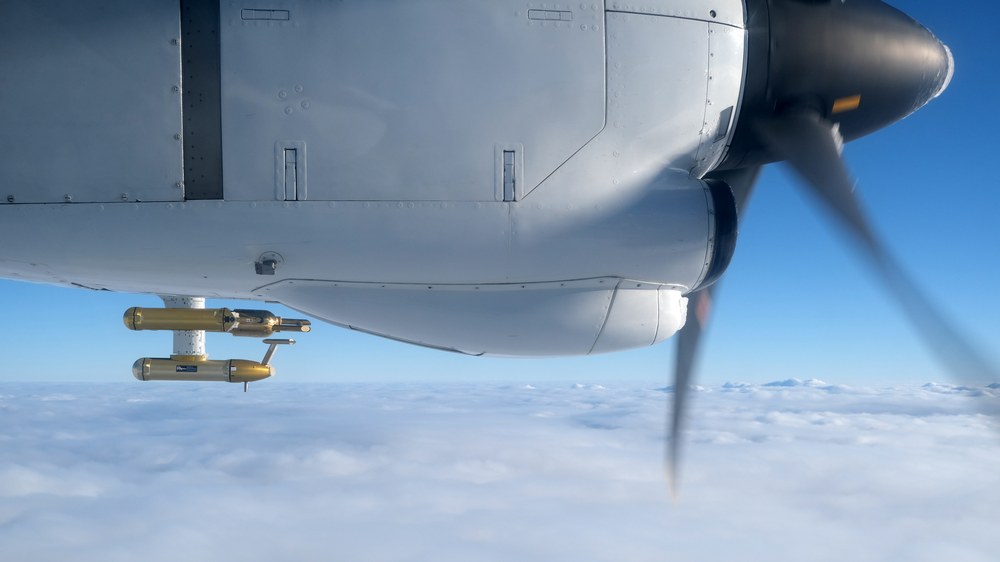Detecting supercooled water droplets in flight



Embraer
- Researchers have tested ten new technologies to detect ice accumulation on aircraft in flight, in wind tunnels and in real-time flight tests.
- The best results were achieved by combining the detection of atmospheric icing conditions with the identification of the actual ice build-up on the aircraft, supported by monitoring the flight performance.
- The successfully tested sensors and systems enable a wide range of applications.
- Focus: Aeronautics
The accumulation of large droplets of supercooled water on aircraft can pose a challenge for flight operations. Ice formations that result from Supercooled Large Droplets (SLD) can form in positions where ice protection systems cannot reach. Additionally, this ice tends to grow faster than other types of 'icing', such as from smaller water droplets. The EU project SENS4ICE (SENSors and certifiable hybrid architectures for safer aviation in ICing Environment) was led by the German Aerospace Center (Deutsche Zentrum für Luft- und Raumfahrt; DLR) in cooperation with 16 project participants, and has investigated new technologies to detect SLD icing.
During the five-year project, researchers developed ten technologies to directly detect ice in flight. They then successfully tested them in icing wind tunnels under both small droplet and SLD icing conditions. One of these new technologies is the Local Ice Layer Detector (LILD), developed by the DLR Institute of Lightweight Systems, which can be integrated onto aircraft structures such as wings or tails. The LILD analysed how ultrasonic waves are influenced by aircraft icing, that is, how they change as ice accretes on the aircraft.
Other researchers developed aircraft sensor technologies based on thermal, optical and electrical principles, while some methods investigated the identification of SLD conditions using satellite data – which would also improve weather forecasts.
New software infers ice from aircraft performance
Scientists at the DLR Institute of Flight Systems developed a new approach to determining icing conditions and the impact that they have based on the performance of the aircraft. They developed software with a monitoring algorithm that continuously analyses aircraft performance, with which they would then infer its icing condition. Ice accretion causes deviations from the normal flight state, and with this the ice could be detected indirectly. Particularly innovative was the project's hybrid approach: by combining different detection technologies they benefitted from individual technology advantages such as precision and quick detection, but they also got more robust overall results. "Hybrid ice detection is a very promising approach for reliable and early warnings in the case of rare SLD icing conditions," concludes Carsten Schwarz, project coordinator for the DLR Institute of Flight Systems.
Real-time tech demo while flying through clouds of Supercooled Large Droplets
Two test campaigns were conducted in flight, specifically when flying through clouds of Supercooled Large Droplets – however, these conditions are rare and difficult to predict. The DLR Institute of Atmospheric Physics coordinated a team of meteorologists and scientists who provided essential support by forecasting the weather before the flight tests and of particular use, in real-time. For both flight campaigns, atmospheric conditions were measured with dedicated high-precision microphysics instruments. This data constitutes the reference material used to evaluate new ice detection technologies.
Flight test campaigns in North America and Europe
In February and March 2023, a Phenom 300 light jet, operated by Embraer, conducted 15 flights in North America, totalling 25 flight hours. In Europe, the ATR 42 environmental research aircraft from SAFIRE (the French facility for airborne research) also conducted 15 flights over about 50 flight hours in Southern France in April 2023. Combined, both campaigns flew for more than 14 hours in icing conditions and more than two and a half hours in SLD conditions – valuable time during which they were able to collect data and successfully test their technologies.
The tried-and-tested sensors and systems open up far-reaching potential applications - not only for the certification and safe operation of future commercial aircraft and in view of the challenges of future energy-efficient and sustainable aviation – but also for new types of aircraft, such as in the areas of UAV (unmanned aerial vehicle) or UAM (urban air mobility). "The best results were achieved by combining the detection of atmospheric icing conditions with the identification of actual ice accretion on the aircraft, additionally supported by monitoring the aircraft’s performance," concludes Schwarz. "The data and experience gathered made it very clear that further research into the specific SLD icing conditions is required to gain a deeper understanding. It is already clear that understanding not only the atmospheric conditions and ice build-up on the aircraft, but above all the effects on the flight characteristics are crucial for ensuring safe flight operations."
The SENS4ICE project
DLR led the European Union SENS4ICE research project and worked with 16 international research institutions and commercial organisations to investigate SLD icing. The project was overseen by an advisory board that included the European Aviation Safety Agency (EASA), the US Federal Aviation Administration (FAA) and other international bodies. The project was funded as part of the EU research framework programme Horizon 2020, under grant number 824253.
